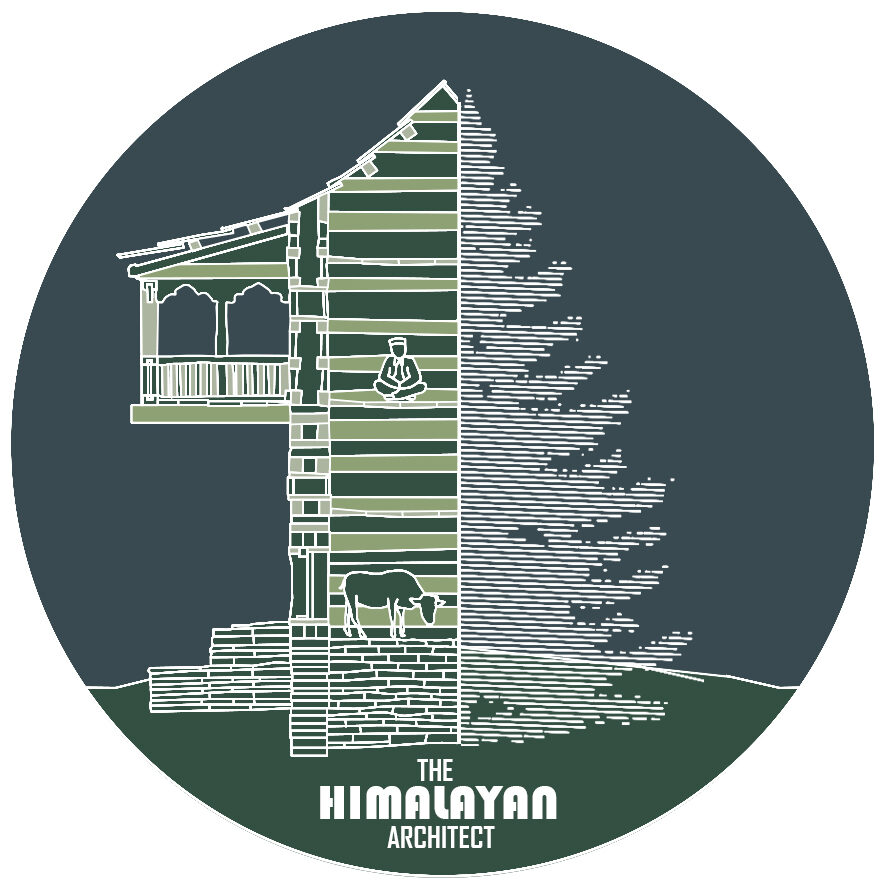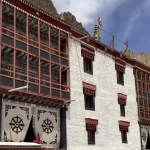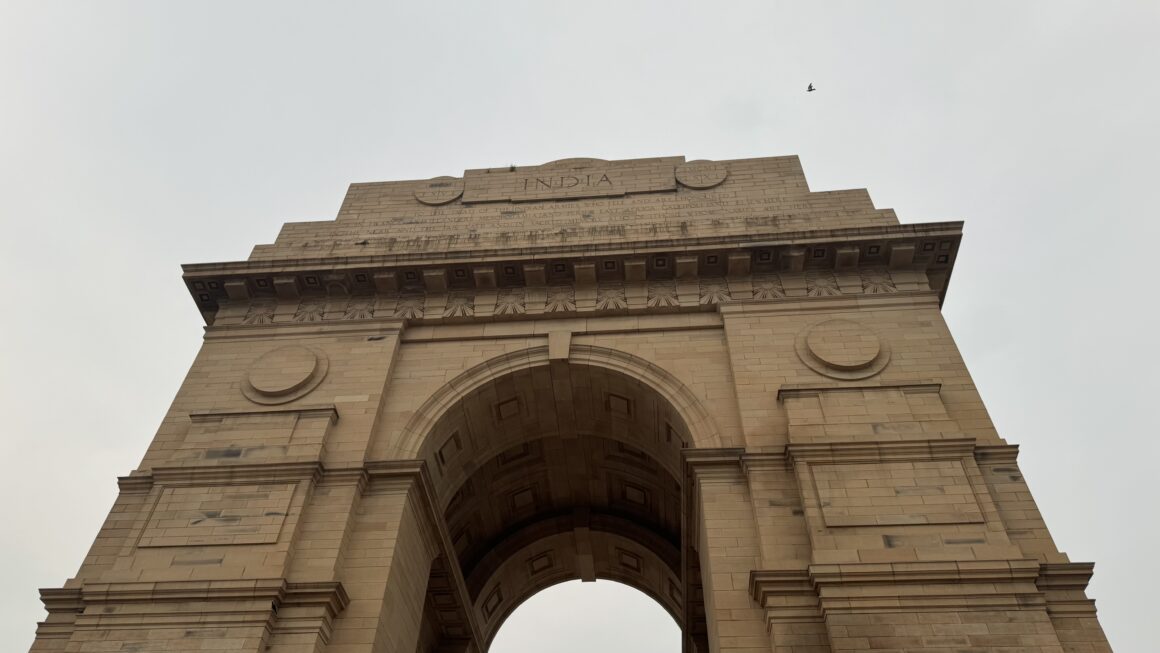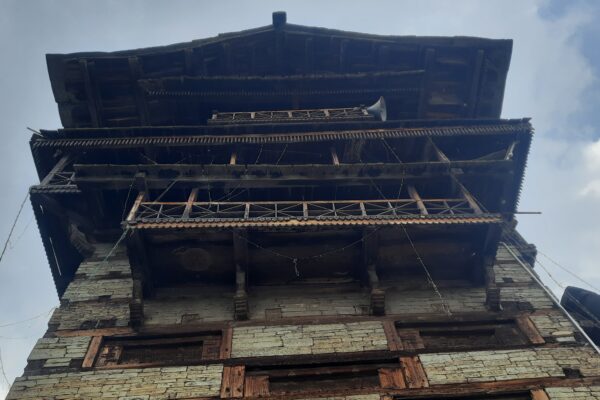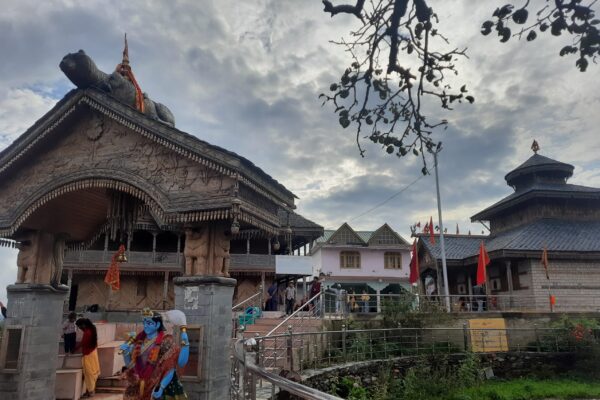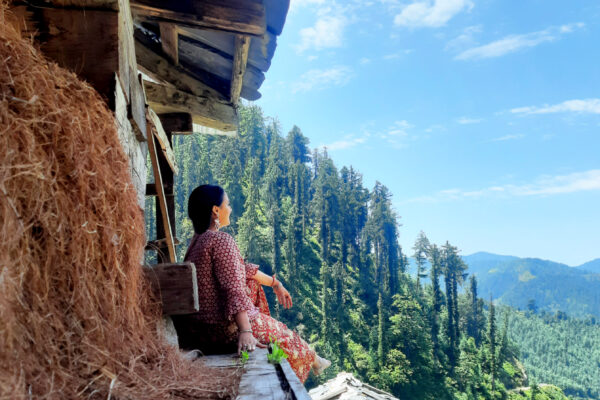Introduction
India Gate stands as a testament to the architectural bravery and the unbeatable spirit of the Indian nation. Built as a war memorial, this majestic triumphal arch not only commands attention with its grandeur but also carries profound historical significance. In this blog, we delve into the architectural marvel that is India Gate, exploring its design, symbolism, and the stories it encapsulates. To know more read full architectural blog on INDIA GATE: A Deep Dive into Architectural Grandeur.
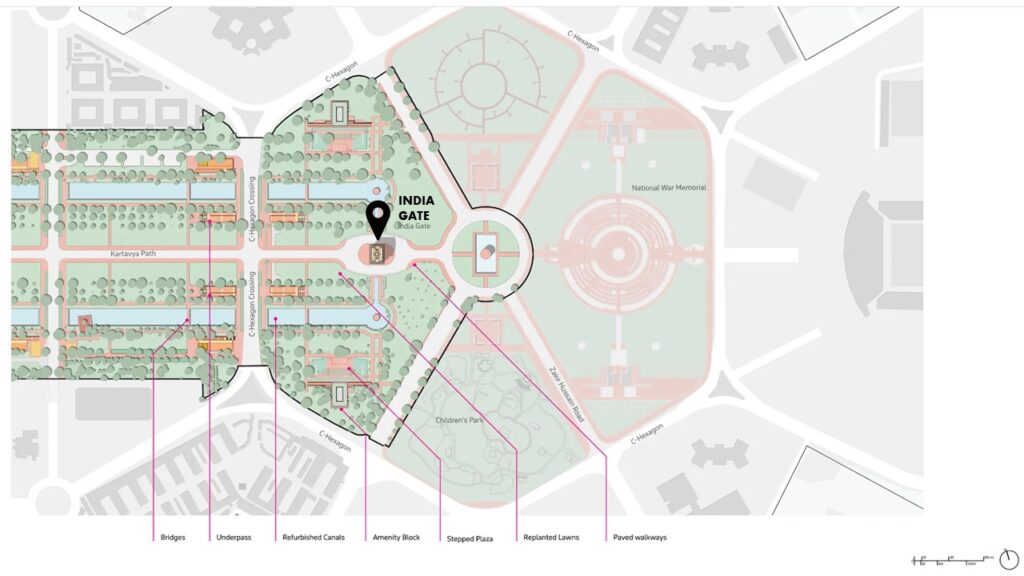
Picture Credit: HCP
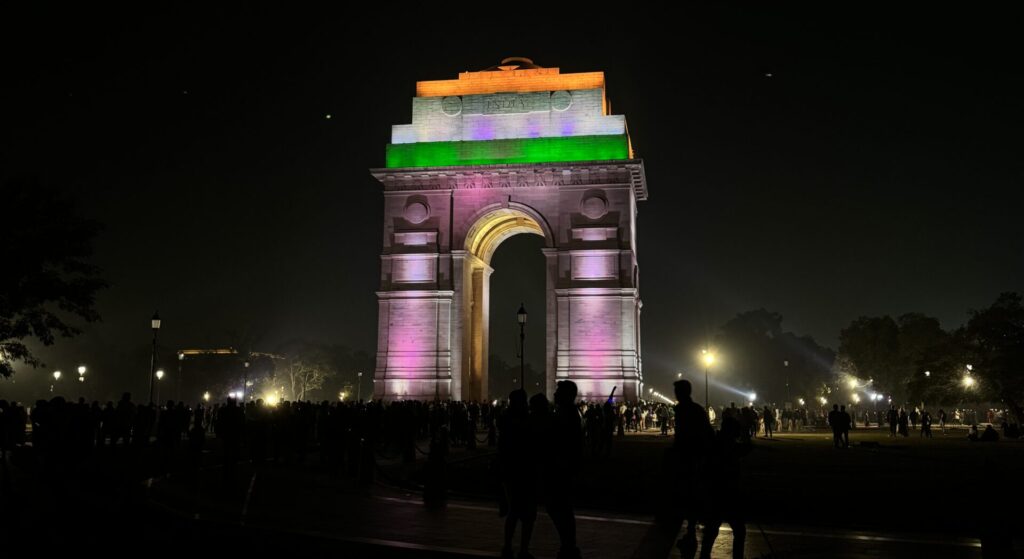
Location
India Gate is located in the heart of New Delhi, the capital city of India. It is situated at the eastern end of Rajpath, a ceremonial boulevard that runs from Rashtrapati Bhavan (the President’s residence) to India Gate. The monument is easily accessible and is a prominent landmark in the city. Visitors can reach India Gate by various modes of transportation, and the surrounding area is often frequented visited by both locals and tourists.
Approach
India Gate is situated in the capital city of the country, so it has got numerous options and ways to approach the monument. Here are common approaches to India Gate:
- By Metro: The Delhi Metro is a convenient and popular mode of transportation in the city. The nearest metro station to India Gate is the Central Secretariat Metro Station. From there, visitors can take a short taxi ride or walk to India Gate.
- By Car: If you are traveling by car, India Gate is easily accessible by road. It is located on Rajpath, which is well-connected to different parts of the city. There are parking facilities available nearby.
- By Bus: Public buses are another option for reaching India Gate. Many buses routes pass through or near India Gate, making it accessible to those using public transportation.
- By Auto-rickshaw or Taxi: Auto-rickshaws and taxis are readily available in Delhi. Visitors can hire an auto-rickshaw or taxi to reach India Gate from various parts of the city.
- Walking: For those in the vicinity, especially in the central part of New Delhi, walking to India Gate is a viable option. The monument is a popular destination, and the surrounding area is pedestrian friendly.
- Tourist Buses: Tour operators in Delhi often include India Gate as part of city tours. Visitors can choose to take a guided tour or use tourist buses that cover major attractions, including India Gate.
- Cycling: Cycling has become a popular mode of transportation in Delhi, and some visitors may choose to cycle to India Gate, especially if they are exploring nearby areas.
- Ride-Sharing Apps: App-based ride-sharing services like Uber and Ola are widely available in Delhi. Visitors can use these services for a convenient and comfortable ride to India Gate.
History
The historical background of India Gate is deeply intertwined with the colonial history of India and the significant role played by the Indian soldiers during World War I. Here’s an overview of the historical context leading to the construction of India Gate:
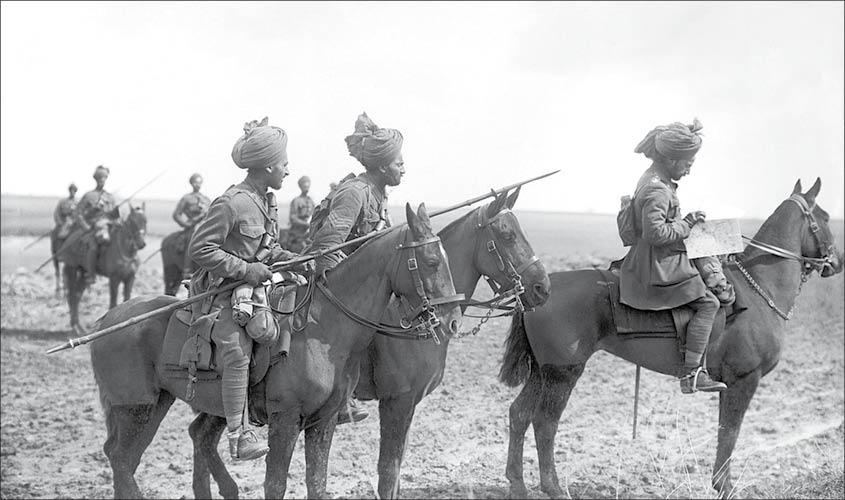
Picture Credit: TheSundayGaurdian
a) World War I and Indian Contribution:
- Outbreak of World War I (1914-1918): World War I, also known as the Great War, erupted in 1914 with major powers across the globe becoming involved in the conflict.
- British Indian Contribution: India, at the time, was under British colonial rule. The British Indian Army played a crucial role in supporting the Allied forces during the war.
- Sacrifices of Indian Soldiers: Indian soldiers, despite being part of a colonial force, made significant sacrifices on the battlefields of Europe, Africa, and the Middle East. They fought alongside their British counterparts and soldiers from other parts of the British Empire.
- Casualties and Losses: The contribution of Indian soldiers came at a considerable cost, with many them losing their lives or getting injured during the conflict.
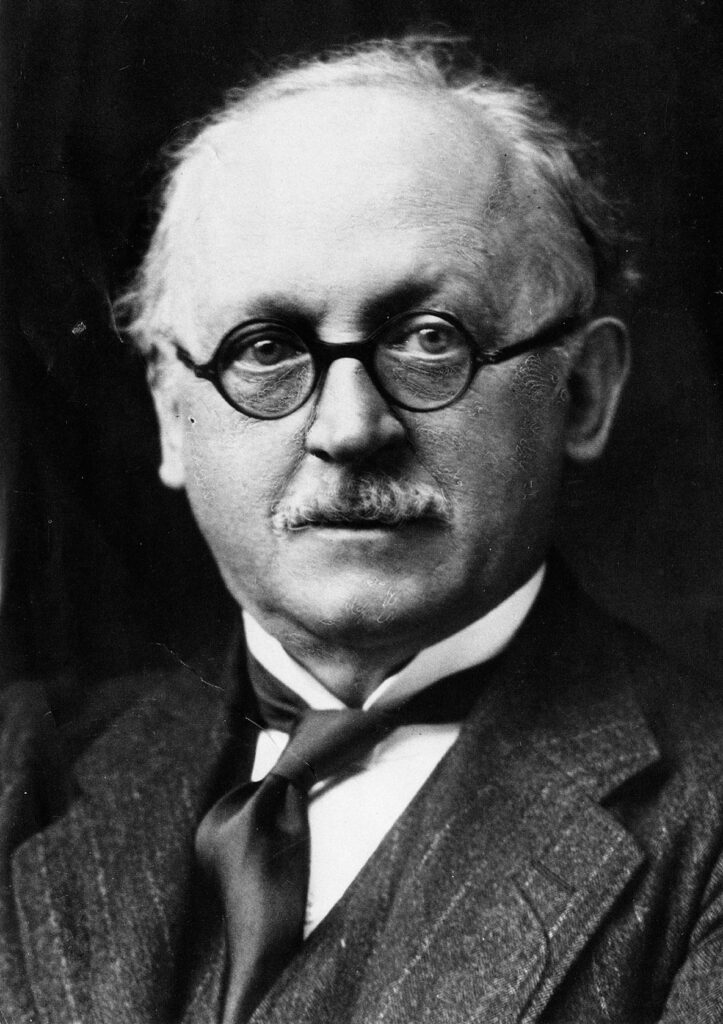
Picture Credit: The Lutyens Trust
b) The Idea of a War Memorial:
Inspired by the tradition of building war memorials in other parts of the British Empire and Allied nations, the idea of constructing a memorial in India to honor the soldiers who sacrificed their lives gained momentum.
Edwin Lutyens’ Vision: Sir Edwin Lutyens, a prominent British architect, was tasked with designing a memorial to commemorate the Indian soldiers who died in World War I. His vision was to create a structure that would be both grand and symbolic.
Foundation Stone Laid (1921): The foundation stone of India Gate was laid on February 10, 1921, by the Duke of Connaught, the third son of Queen Victoria and the then Governor-General of India.
Completion and Unveiling (1931): The construction of India Gate was completed in 1931. The monument was officially unveiled on February 12, 1931, by the Viceroy of India, Lord Irwin.
c) Commemorating Sacrifice:
Inscriptions and Eternal Flame: The arch of India Gate bears the inscription “Amar Jawan” (Immortal Soldier) on both sides. The names of over 13,000 soldiers, including British and Indian, who lost their lives in the Northwest Frontier in the Afghan war of 1919, are inscribed on the walls. At the base of India Gate, the Amar Jawan Jyoti (the Flame of the Immortal Soldier) was added later as a perpetual flame to honor the soldiers who sacrificed their lives in the Indo-Pakistani War of 1971, which has been shifted to recently built National War Memorial.
Symbol of National Pride: Over the years, India Gate has become not only a memorial to the fallen soldiers of World War I but a symbol of national pride and unity. It is a place where people gather to pay their respects, especially on important national occasions such as Republic Day.
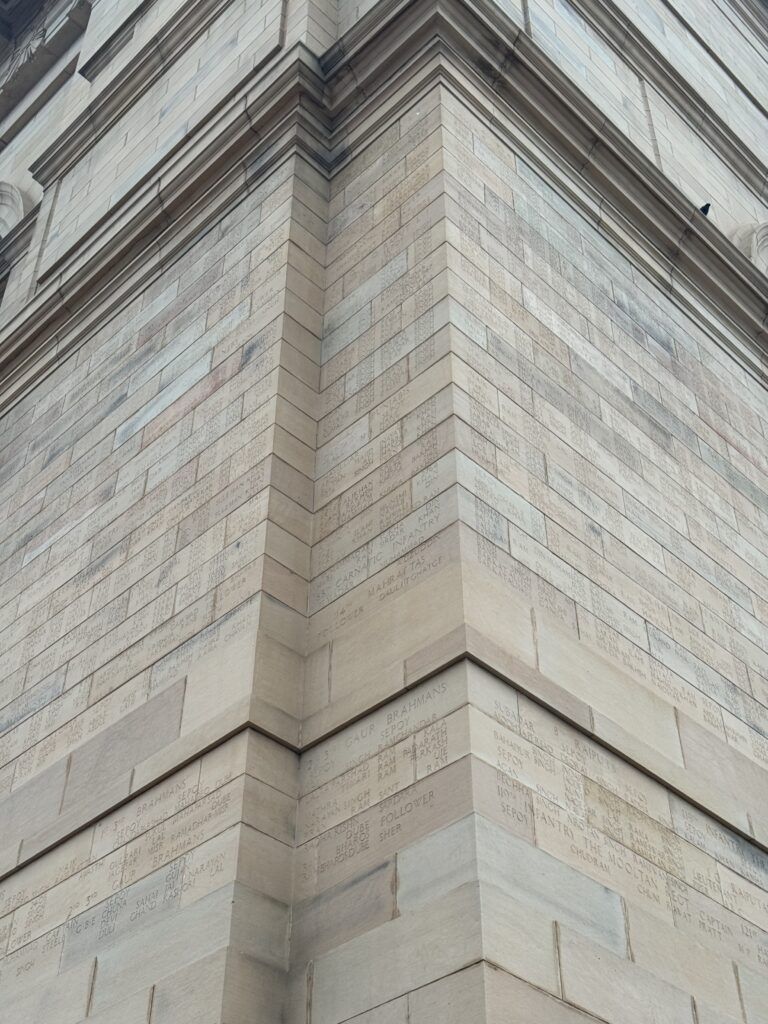
Architecture and planning- INDIA GATE: A Deep Dive into Architectural Grandeur
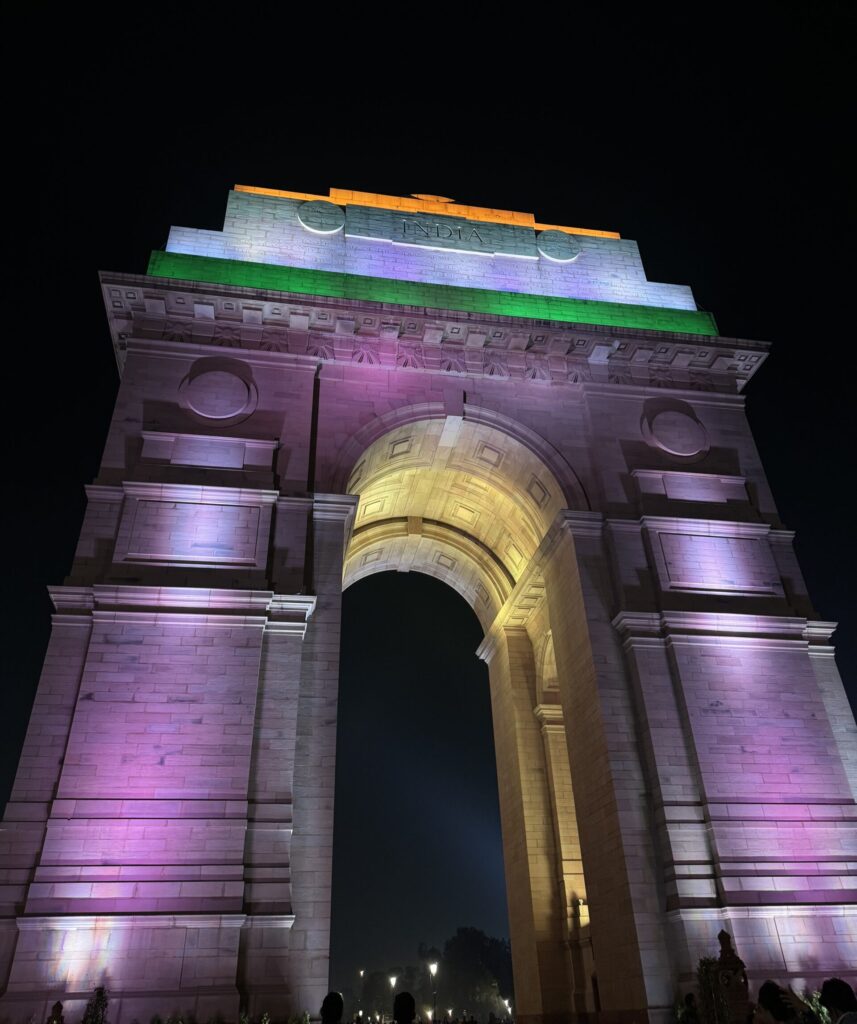
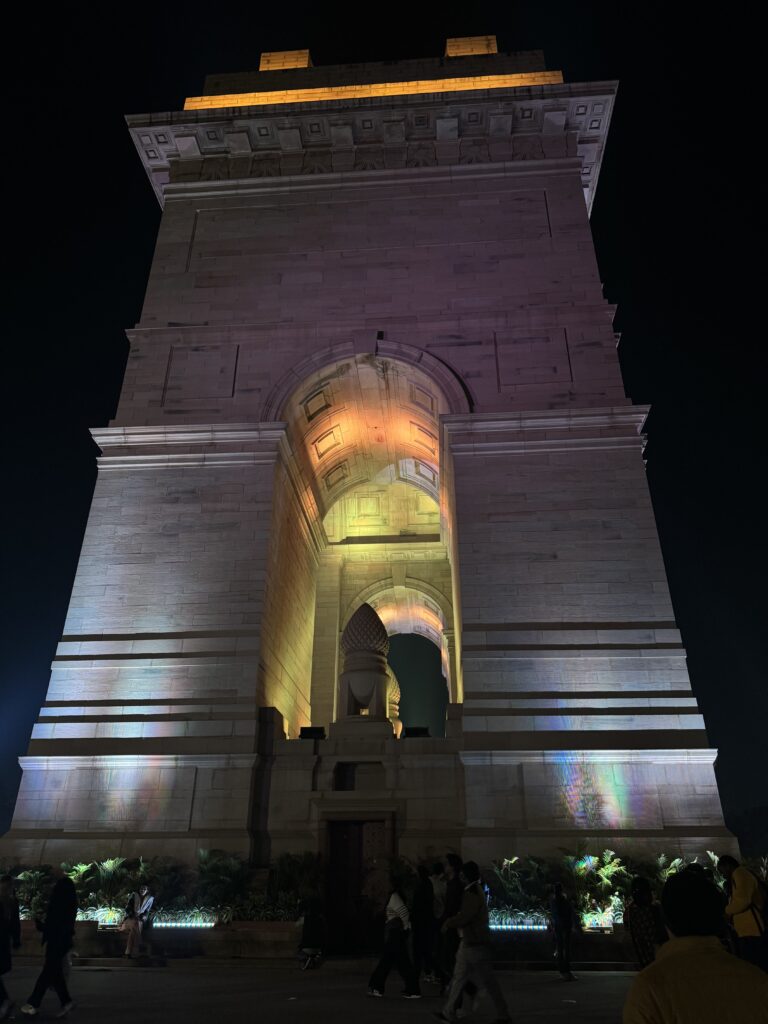
The India Gate features a width of 9.1 m at its larger opening and rises in tiers to reach a height of 42 meters. It culminates in a substantial cornice moulding above a frieze adorned with sunburst motifs. At the pinnacle, there is a shallow domed bowl designed for the purpose of holding burning oil during anniversaries. The hexagonal complex of the memorial gate, spanning a diameter of approximately 625 meters, encompasses an expansive area of about 306,000 square meters.
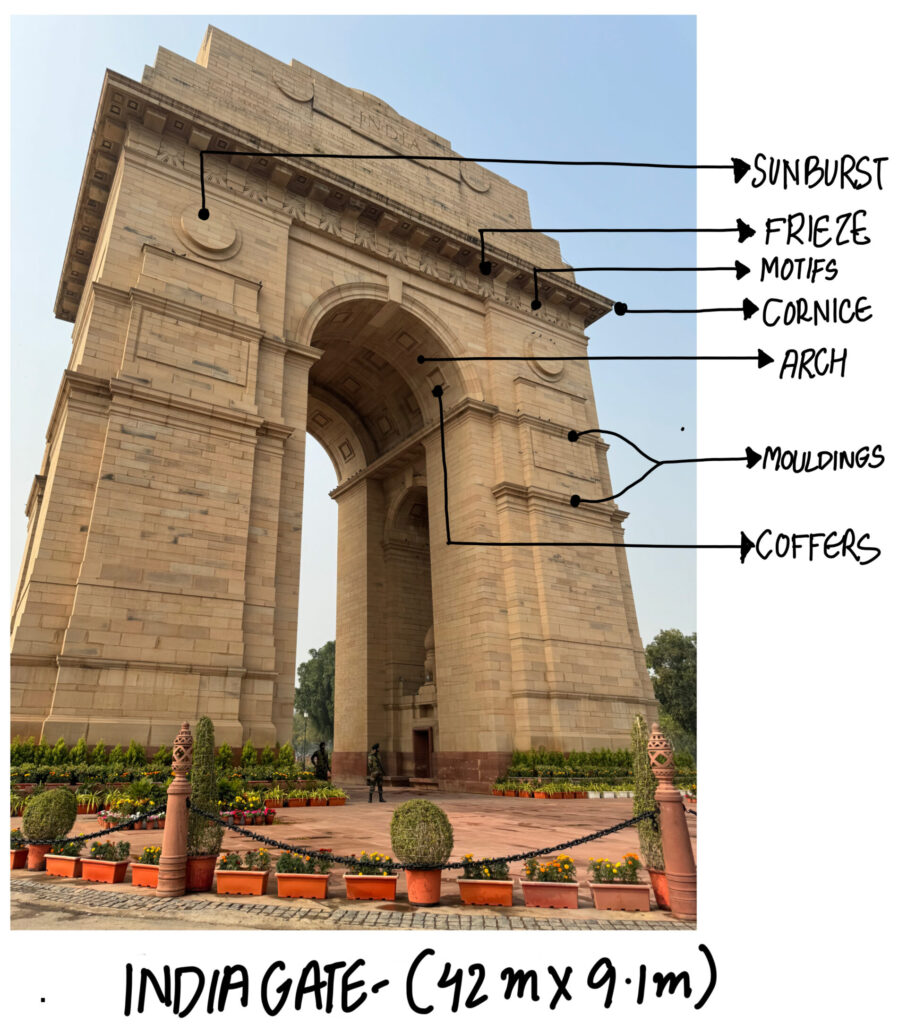
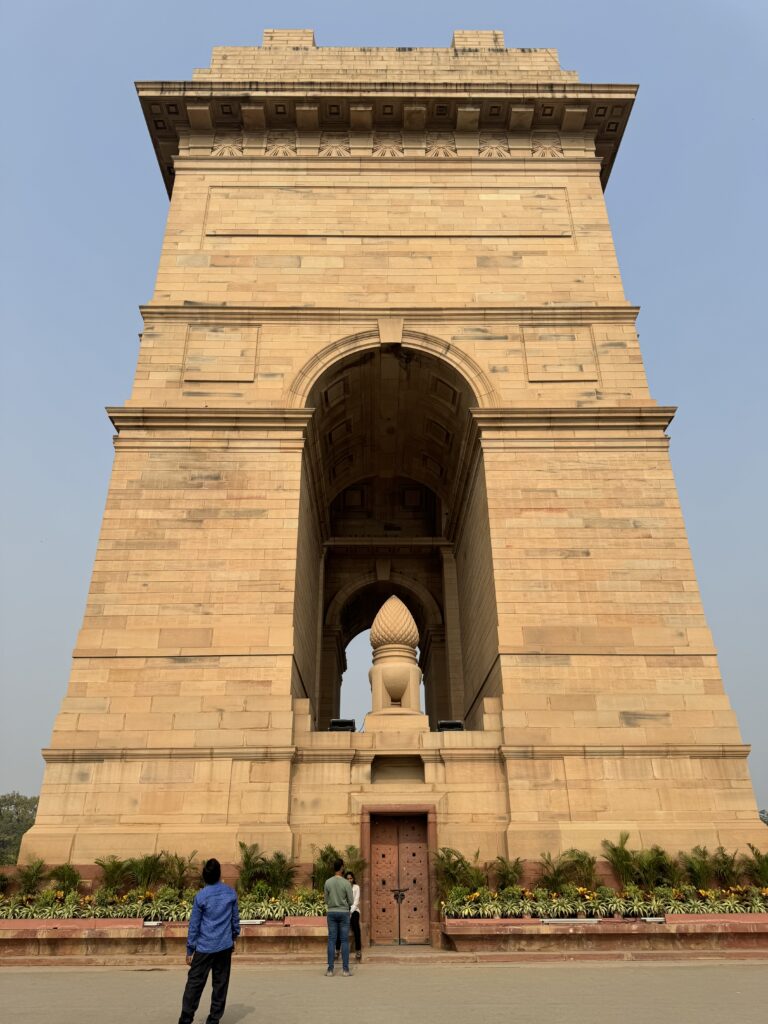
Design Inspiration:
India Gate’s architectural roots can be traced back to the Arc de Triomphe in Paris, and its design was conceptualized by Sir Edwin Lutyens, a visionary architect of the early 20th century. The monument seamlessly blends Western and Indian architectural elements, creating a structure that is both imposing and culturally resonant.
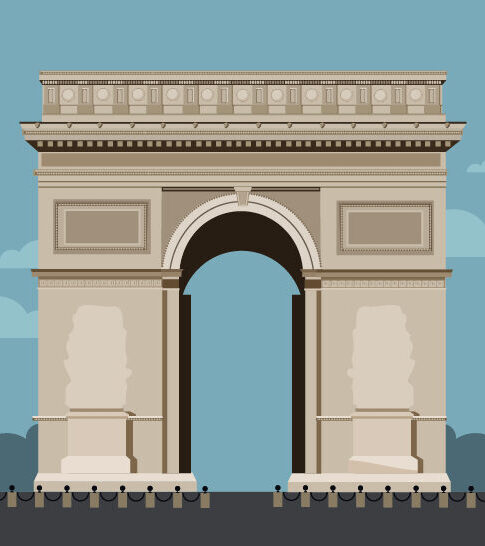
Arc de Triomphe: Paris, France
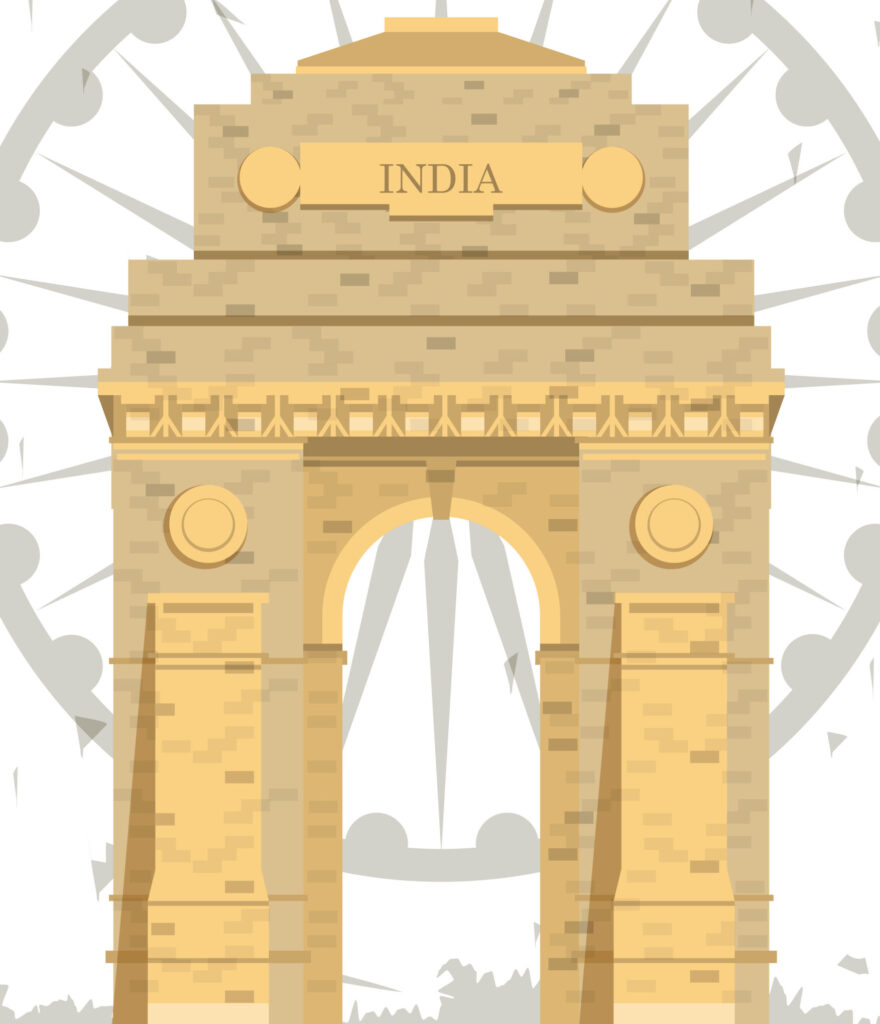
India Gate: Delhi, India
The Triumphal Arch
Echoing the grandiosity of classical Roman arches. The arch serves as the focal point, drawing the eyes of onlookers and inviting them to reflect on the historical significance it embodies. The India Gate structure takes an oblong form, featuring a substantial arch on each of its four faces. Notably, the arches on the longer sides are both larger and taller than those on the shorter sides. On the shorter sides, the arches are obstructed at the base by doorways but remain open higher up. From a technical standpoint, the presence of four arches classifies the structure as a tetrapylon. Above the blocked lower portions of the arches on the shorter sides, a significant stone ornament is prominently displayed. Mouldings encircle the building at the levels where both sizes of arches originate, and the keystones of the arches slightly protrude.
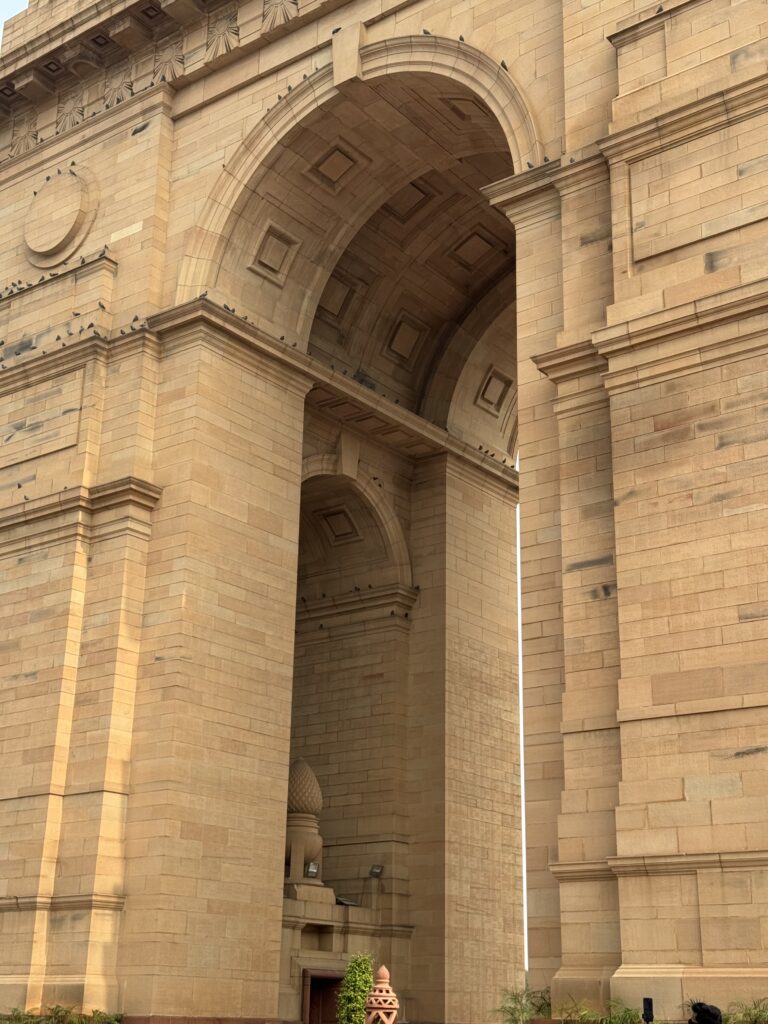
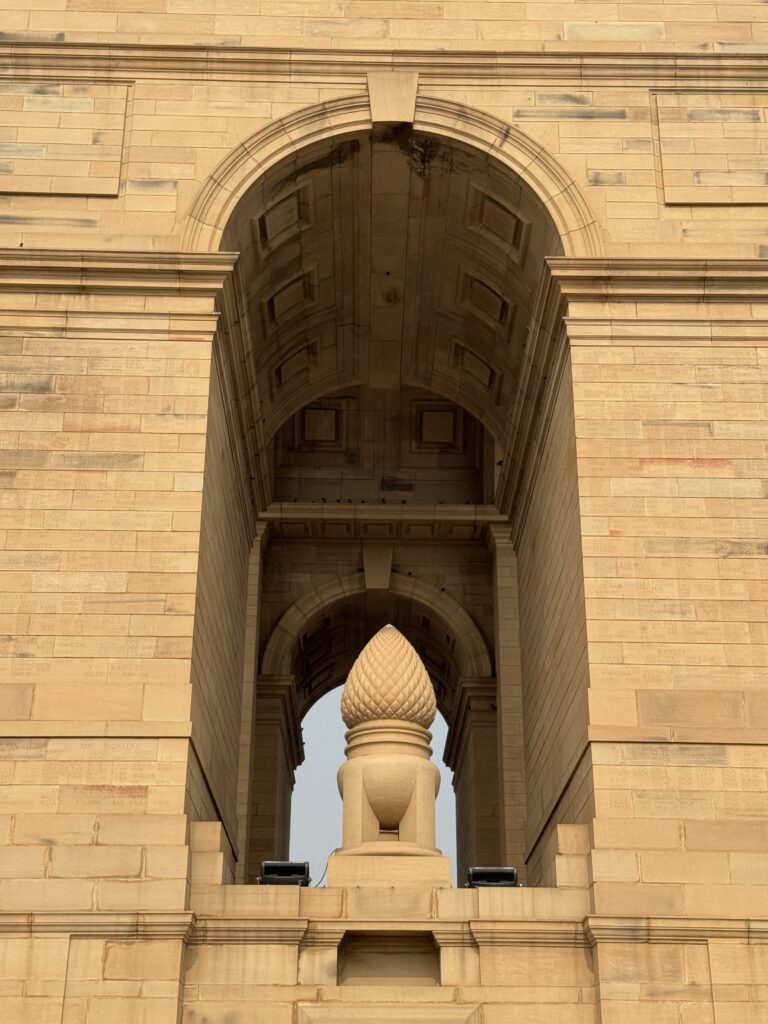
The Canopy:
Crowned by a large shallow dome, the canopy adds a touch of elegance to India Gate. This intricately designed dome, adorned with decorative elements, further enhances the architectural splendor of the monument. Approximately 150 meters to the east of the gate, situated at a junction where six roads intersect, stands a cupola with a height of 22 m. In its construction, Lutyens employed four columns in the Delhi Order style to uphold the domed canopy and its chhajja. Honorable Prime Minister Narendra Modi ji inaugurated the statue of Subhash Chandra Bose on his 125th anniversary in January 2022.
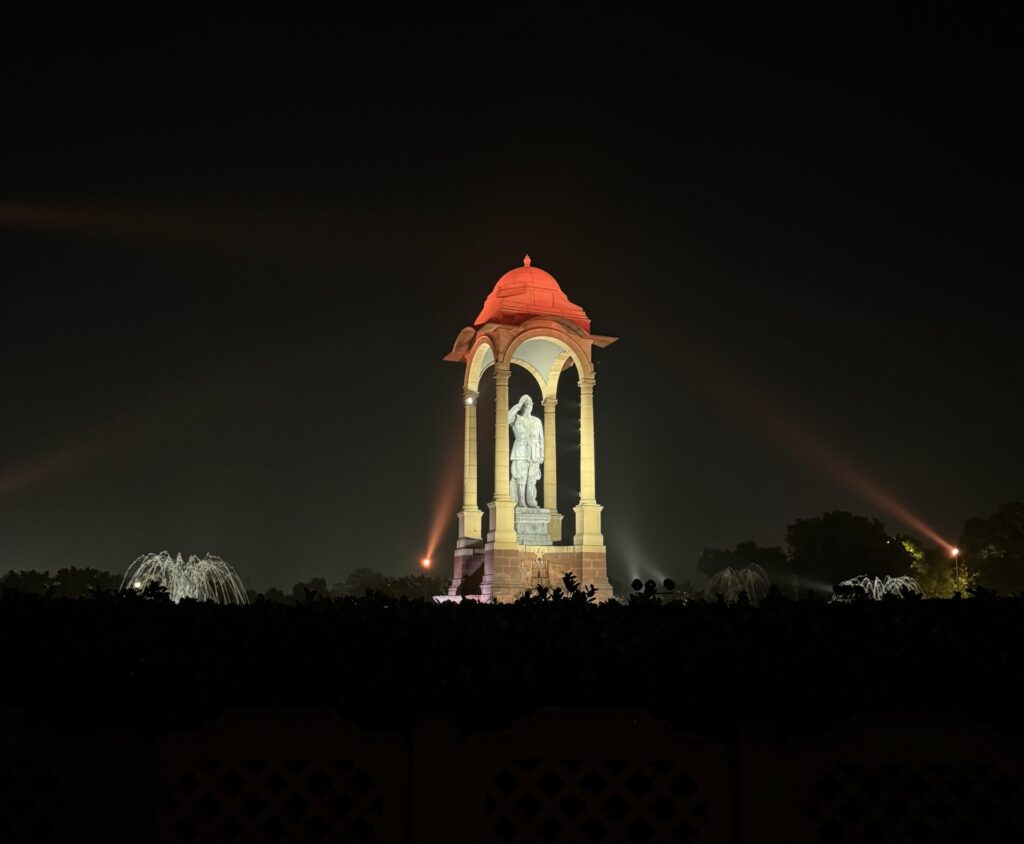
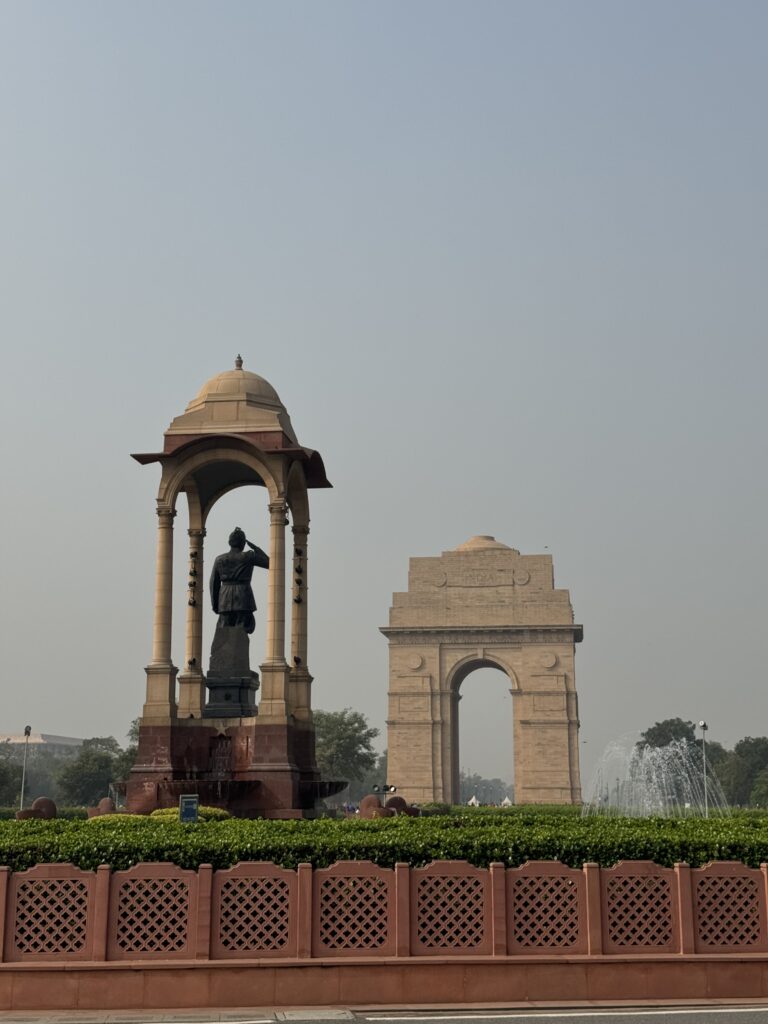
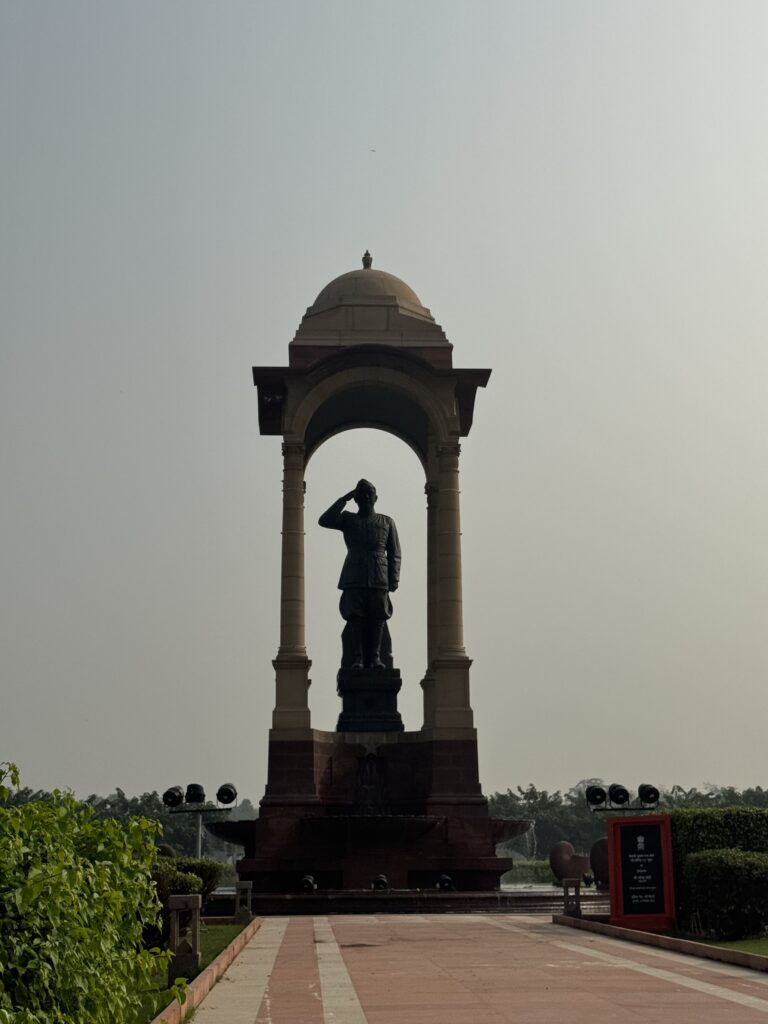
Construction of the Gate
The construction of India Gate, which began in 1921 and was completed in 1931, presented various challenges. The vast scale of the monument, coupled with the intricacies of its design, required meticulous planning and execution. The use of traditional construction methods, coupled with innovative approaches, allowed for the successful completion of this architectural masterpiece.
Foundation:
The foundation of India Gate is constructed using stones, chosen for their durability and strength. The meticulous planning and execution of the foundation laid the groundwork for the stability and longevity of the entire structure.
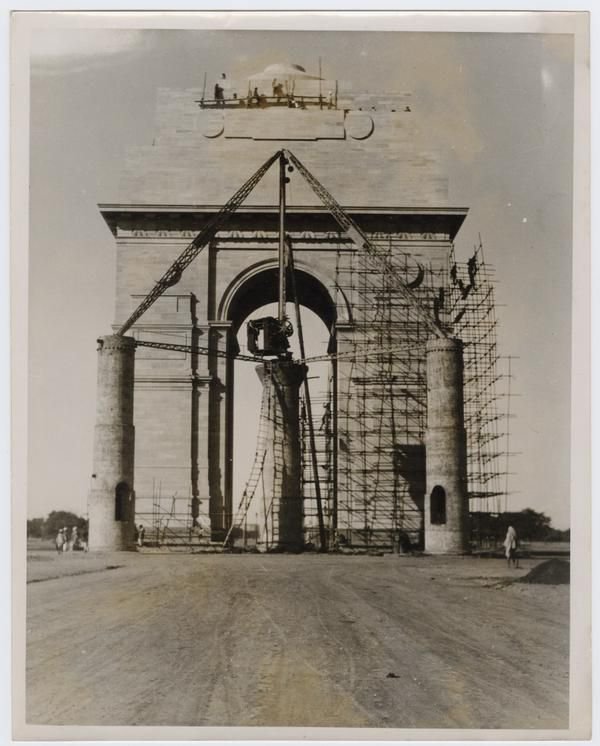
Material
Sandstone’s Enduring Appeal:
The extensive use of sandstone in India Gate’s construction is not merely an architectural choice but a testament to the enduring appeal of the material. Sandstone, with its warm hues and natural patterns, not only adds to the aesthetic beauty of the monument but also ensures its resilience against the elements.
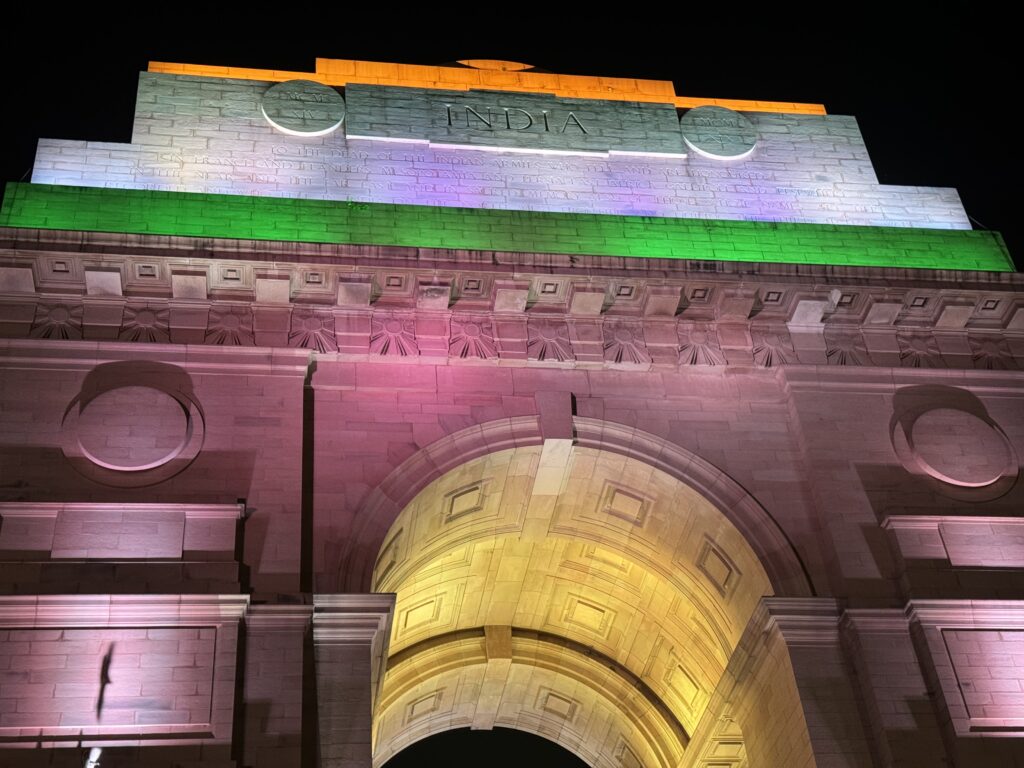
Bharatpur Stones:
The foundation, as mentioned earlier, is made of Bharatpur stones. These stones, sourced from the region of Bharatpur in Rajasthan, are known for their hardness and durability, making them ideal for supporting the weight of a structure as monumental as India Gate.
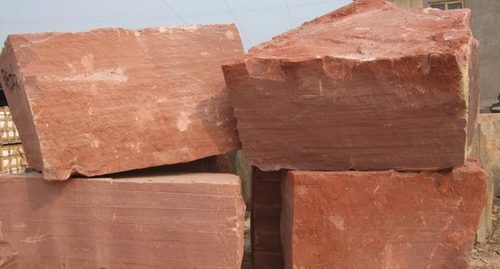
Detailing:
The monument is adorned with intricate carvings, including floral patterns, wreaths, and other decorative elements. The horizontal cornice moulding is a distinct feature of the gate, it also includes the frieze and sunburst motifs inspired by the classical architecture.The ceilings and undersides of the arches are adorned with evenly spaced coffers.
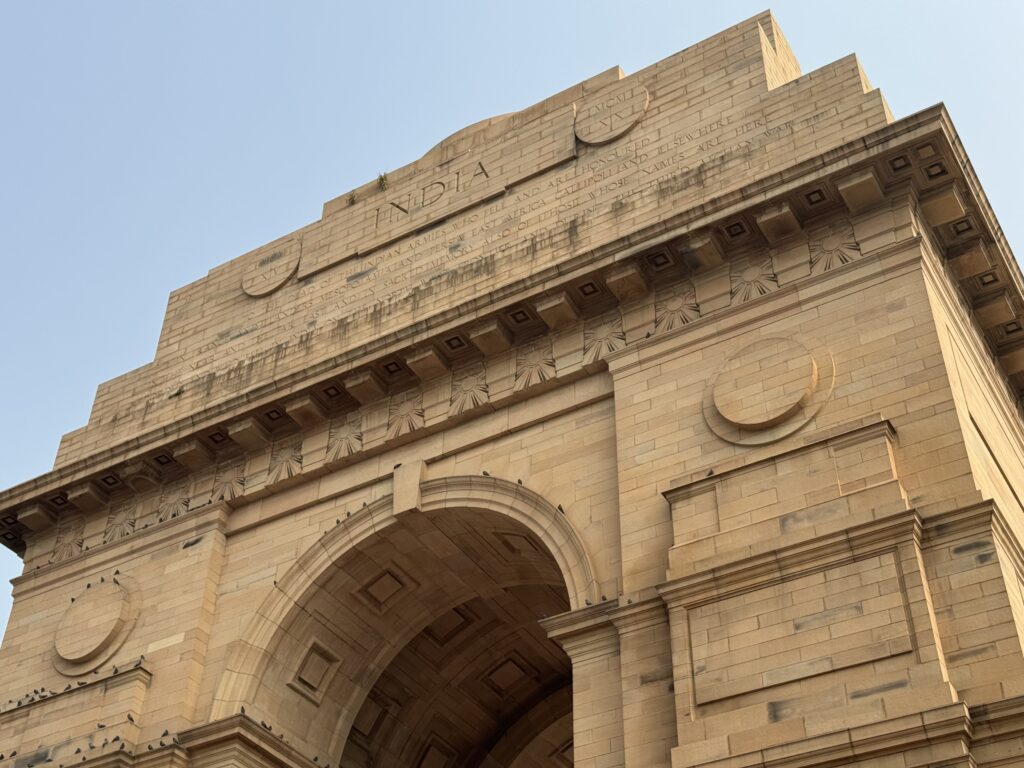
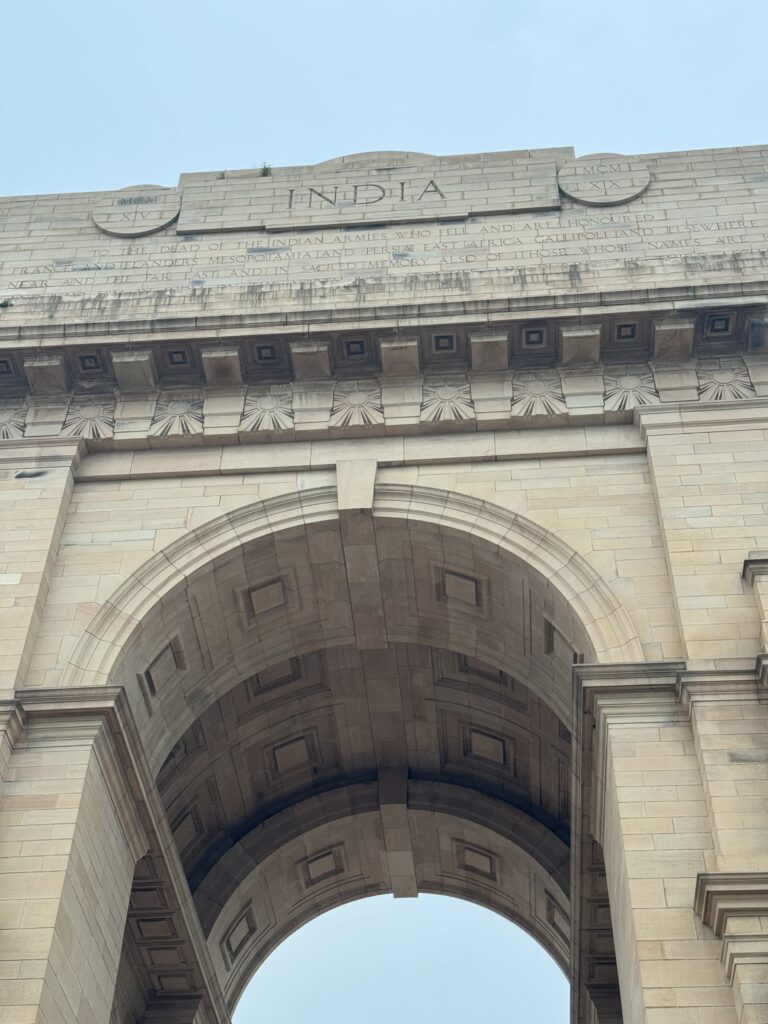
The Surroundings landscapes:
Surrounded by expansive lawns with water body and the fountain, India Gate’s setting is as integral to its allure as its architecture. Families, tourists, and locals alike gather on these green grounds, creating a serene atmosphere that complements the monument’s solemnity.
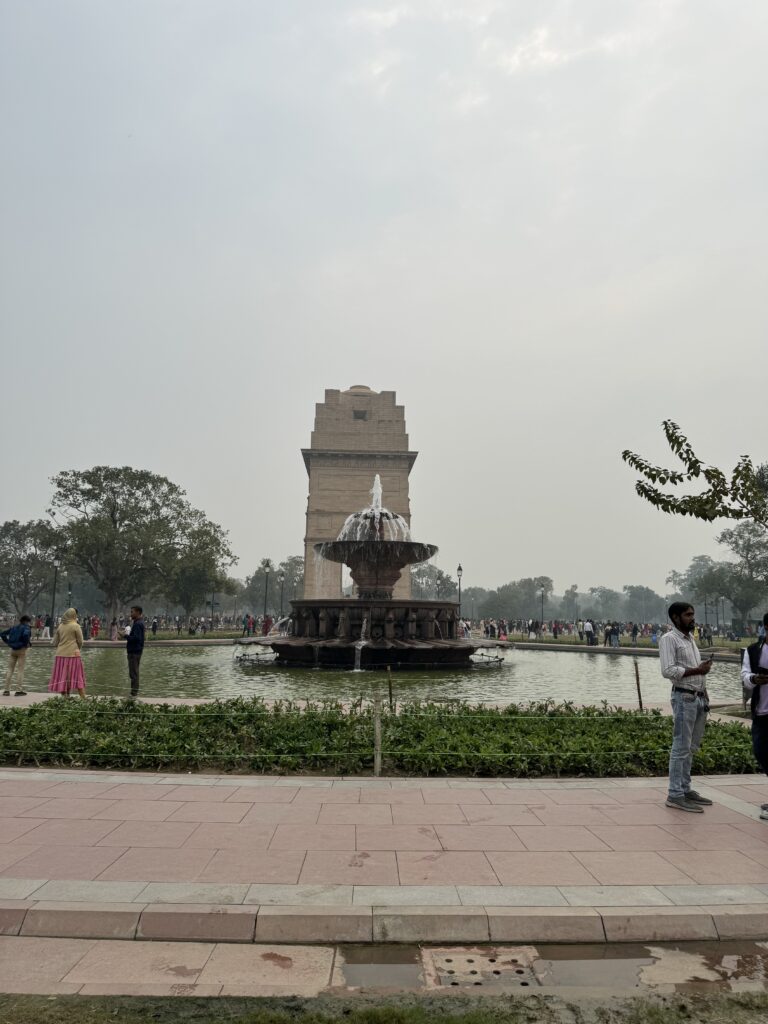
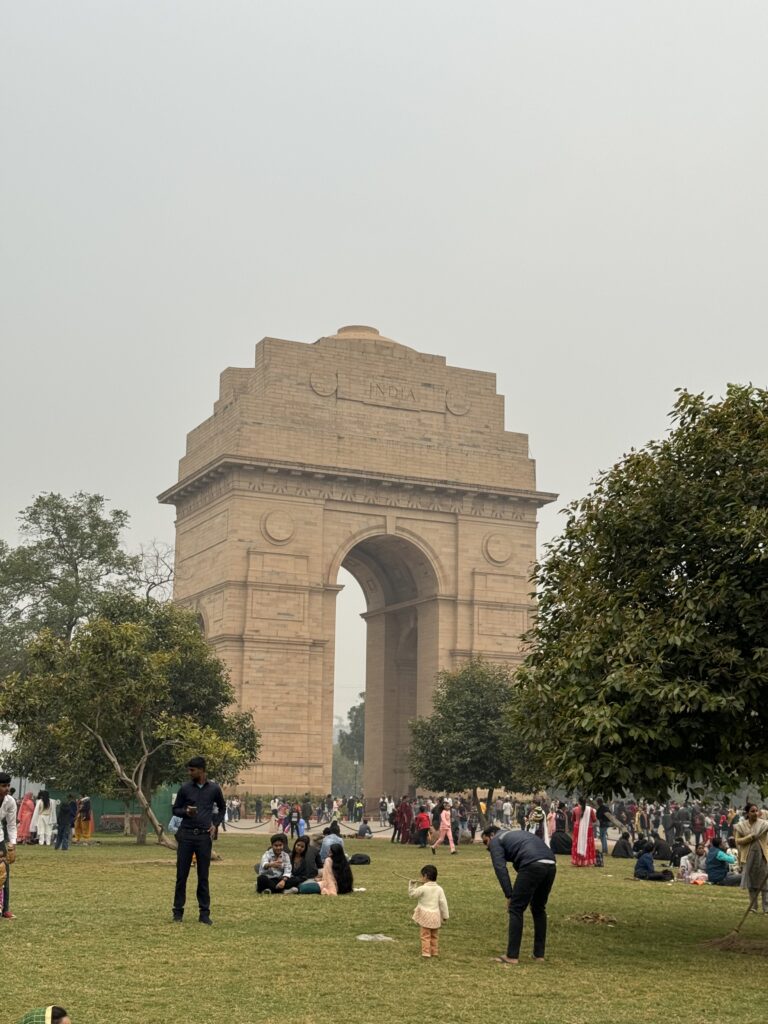
Conclusion:
India Gate stands as a timeless emblem of honor, sacrifice, and national pride. Its majestic arch, inspired by international triumphal monuments, serves as a poignant tribute to the Indian soldiers who bravely laid down their lives during World War I. Open day and night, India Gate’s accessibility and central location in New Delhi make it a revered destination where citizens and visitors unite to pay homage, celebrate, and connect with the shared history of India. In its grandeur and solemnity, India Gate transcends mere architecture, embodying the spirit of a nation that reveres its heroes and cherishes the legacy of sacrifice that resonates within its iconic structure.
I hope you liked this blog INDIA GATE: A Deep Dive into Architectural Grandeur. Reconnecting humanity with nature, please let me know through your comments. Also share it with other people who are passionate about architecture and design. Contact us in case of any queries and also read my previous blogs related to architecture and travel. Thank you.
